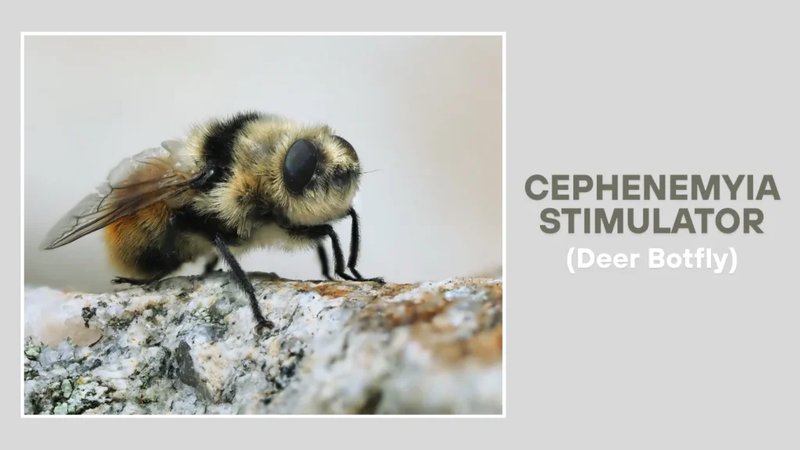
Botflies are fascinating yet somewhat unsettling insects that lay their eggs in the skin of mammals, including humans. If you’ve spent time outdoors in certain regions, you might be wondering how to avoid these pesky pests. Knowing where they are most likely to be found can help you steer clear of situations you wouldn’t want to end up in. This article will take you through the various habitat types that are most susceptible to botfly activity, helping you to enjoy nature without becoming a host yourself.
The Warmth of Tropical Regions
One of the prime spots for botfly activity is the **tropical region**. Imagine stepping into a warm, humid environment where everything seems to grow a little faster. Whether it’s lush rainforests or sandy beaches, these areas are perfect for botflies.
The **climate** plays a huge role. Tropical regions often have mild winters, which means that botflies can continuously reproduce throughout the year. They thrive in the warm temperatures, making it easier for their larvae to develop in the bodies of their hosts. When you think about it, it’s like a never-ending summer party for these insects!
Additionally, the **biodiversity** in tropical areas creates a buffet of potential hosts. Animals like cattle, deer, and even humans become targets for botfly eggs. The more mammals present in a habitat, the better the chances are for botflies to find a suitable home for their offspring.
The Influence of Humidity
Humidity plays a pivotal role in botfly activity. These insects prefer moist environments where their larvae can thrive without drying out. The combination of moisture and warmth creates a perfect breeding ground. You might be thinking, “So, can I avoid these pests by staying dry?” Not entirely! Even drier areas near tropical climates can still harbor botflies due to their mobility.
Warmer months bring increased humidity levels, and guess what? That’s when botflies become more active. So, if you’re planning a trip to a tropical destination, it’s wise to be mindful of staying covered and using insect repellents to protect yourself.
Grasslands and Pastures
Now let’s shift gears to **grasslands and pastures**. These wide-open spaces, where cattle roam and grass sways in the breeze, are like freeways for botflies. The presence of herbivores makes these habitats incredibly appealing.
Cattle, sheep, and other mammals are prime targets because botflies often lay their eggs on them. When the adults lay eggs, they’re not just doing it for fun; they’re ensuring the next generation has a meal when the larvae hatch. It’s a win-win for the botflies but a nightmare for the animals involved!
In these habitats, the **abundant food supply** for potential hosts means that botfly populations can explode. And with that many animals around, it’s only a matter of time before they start targeting humans—especially if people are nearby working with livestock or spending time in the fields.
Seasonal Changes Impacting Grasslands
Seasonal changes also play a role in botfly activity in grasslands. During warmer months, you’ll find more insects buzzing about, and the chances of encountering a botfly increase. This is when they’re most active, making it crucial to be vigilant if you’re hiking or working in these landscapes.
Moreover, the **habitat disturbance** from farming and grazing can contribute to both the health of the ecosystems and the prevalence of botflies. Overgrazing may reduce competition among hosts, allowing botfly populations to boom even more. It’s a balancing act in these ecosystems that’s worth keeping an eye on.
Forested Areas
Next up are **forested areas**, which can be a mixed bag when it comes to botfly activity. These habitats, filled with trees and underbrush, may seem less likely for botflies compared to open fields. However, they still provide plenty of opportunities for these insects.
In forests, smaller mammals like raccoons, squirrels, and deer are often present. These creatures become unsuspecting hosts for the botfly larvae. The dense vegetation also offers a safe haven for female botflies to lay their eggs away from the bright sun.
Moreover, the **wooded environments** often support many different species of mammals, increasing the chances of botfly activity. Just think about it: when there are more animals around, there’s a greater likelihood for botflies to target them. It’s like a buffet where the botflies get to choose their favorites!
The Role of Humans in Forested Areas
Humans often interact with forested areas, whether for hiking, camping, or just enjoying nature. Unfortunately, this can lead to unintended encounters with botflies. When you venture into these environments, you might unknowingly come close to animals that carry botfly larvae.
So, if you’re planning a hike through the woods, make sure to dress appropriately. Wearing long sleeves and pants can minimize skin exposure, helping to reduce your chances of becoming a host. You might even want to think about using a bug spray that targets botflies specifically—just a tip!
Urban and Suburban Areas
Believe it or not, **urban and suburban areas** can also be susceptible to botfly activity. While they may not be as common in cities, certain conditions can draw these insects closer to human habitats.
In areas where there’s a mix of green spaces and residential homes, you can find gardens and parks that attract wildlife. Animals such as dogs and cats can serve as hosts for botflies if they have access to grassy areas or come into contact with other wildlife. You know how your pets love to roll around in the grass? Well, that’s like inviting botflies to a party.
Additionally, the **combination of warm temperatures** and potential for stray animals in urban areas can create a perfect storm for botfly activity. As cities expand and encroach on natural habitats, these pests can find themselves living closer to humans than ever before.
Protecting Yourself in Urban Settings
So, how can you protect yourself and your pets from botflies in urban settings? Keeping your animals indoors, especially during peak flying times, can reduce their chances of becoming hosts. If your furry friends must go outside, consider using protective collars or sprays made specifically for them.
Also, try to avoid sitting directly on the grass in public parks—think picnic blankets instead. You might not see botflies buzzing around, but that doesn’t mean they’re not lurking nearby.
Understanding the habitat types most susceptible to botfly activity can make a significant difference in how we interact with the outdoors. It’s clear that warm, humid environments, open pastures, forests, and even urban areas can provide opportunities for these pests to thrive.
Being aware of your surroundings is crucial. Whether you’re taking a hike in the woods, visiting a farm, or just hanging out in your backyard, knowing what habitats are inviting to botflies can help you enjoy nature without becoming a host.
So, next time you plan an outdoor adventure, remember to dress smart, use repellents, and be cautious. With a bit of awareness, you can enjoy the beauty of nature while steering clear of those pesky botflies!

